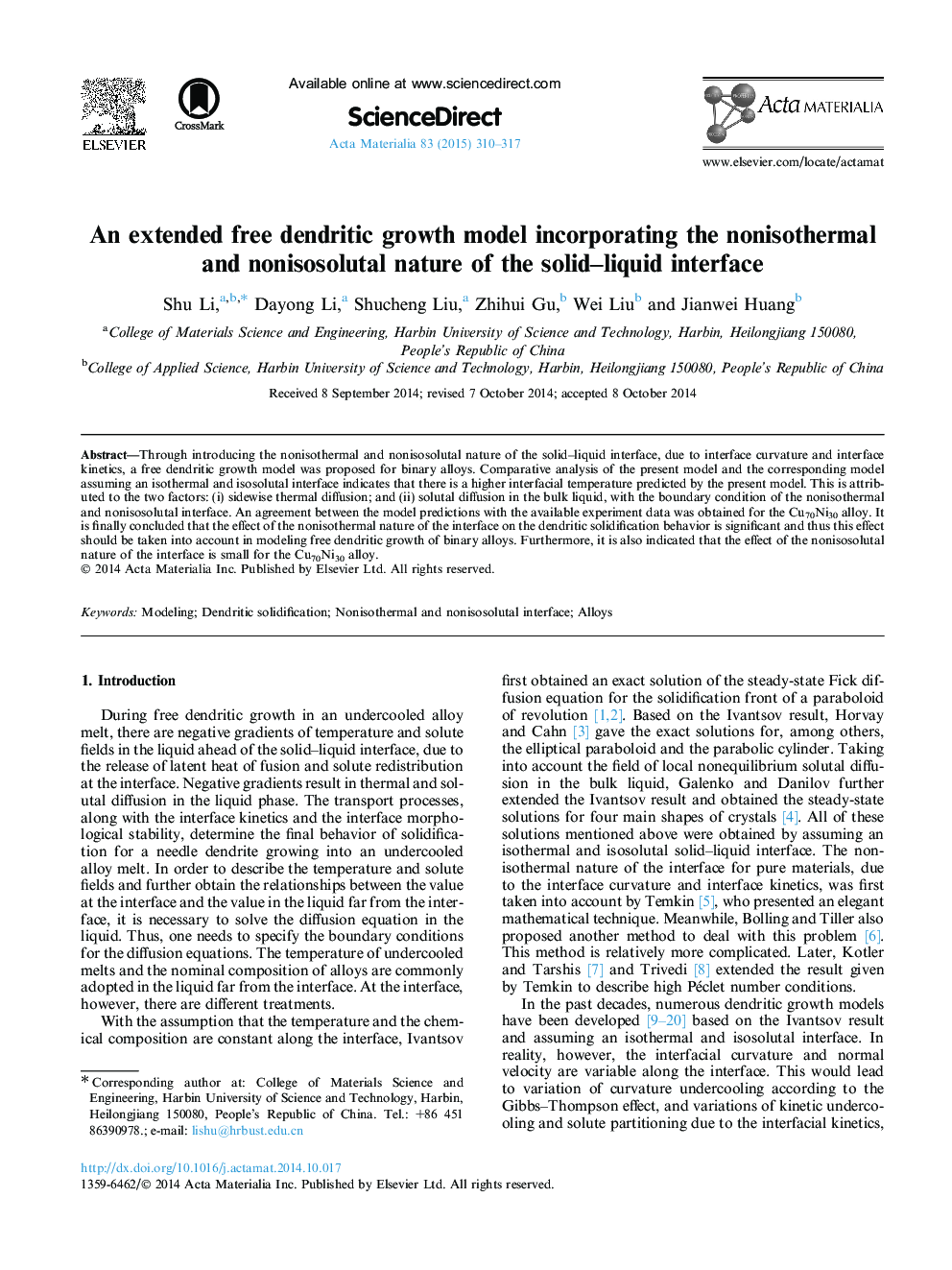| Article ID | Journal | Published Year | Pages | File Type |
|---|---|---|---|---|
| 7880931 | Acta Materialia | 2015 | 8 Pages |
Abstract
Through introducing the nonisothermal and nonisosolutal nature of the solid-liquid interface, due to interface curvature and interface kinetics, a free dendritic growth model was proposed for binary alloys. Comparative analysis of the present model and the corresponding model assuming an isothermal and isosolutal interface indicates that there is a higher interfacial temperature predicted by the present model. This is attributed to the two factors: (i) sidewise thermal diffusion; and (ii) solutal diffusion in the bulk liquid, with the boundary condition of the nonisothermal and nonisosolutal interface. An agreement between the model predictions with the available experiment data was obtained for the Cu70Ni30 alloy. It is finally concluded that the effect of the nonisothermal nature of the interface on the dendritic solidification behavior is significant and thus this effect should be taken into account in modeling free dendritic growth of binary alloys. Furthermore, it is also indicated that the effect of the nonisosolutal nature of the interface is small for the Cu70Ni30 alloy.
Related Topics
Physical Sciences and Engineering
Materials Science
Ceramics and Composites
Authors
Shu Li, Dayong Li, Shucheng Liu, Zhihui Gu, Wei Liu, Jianwei Huang,
